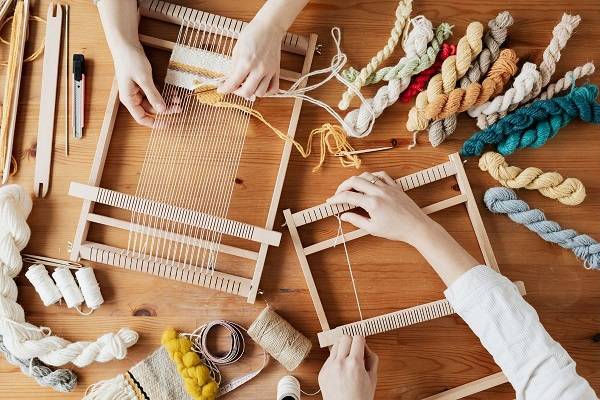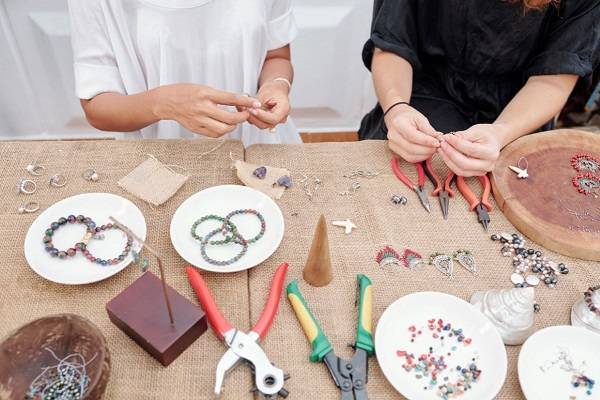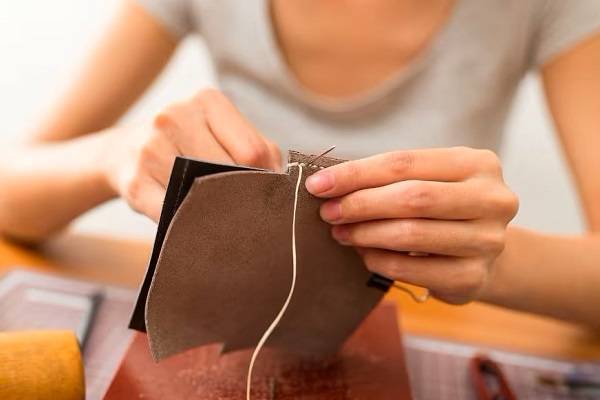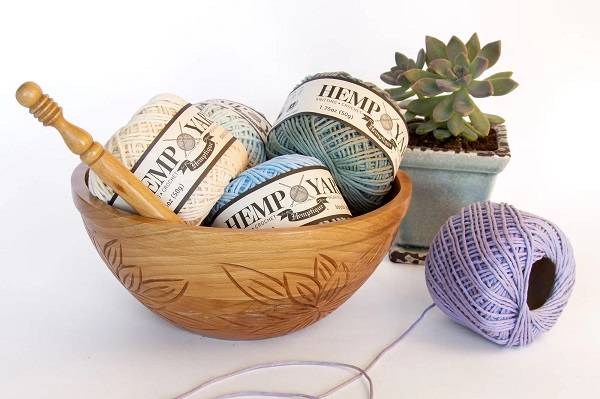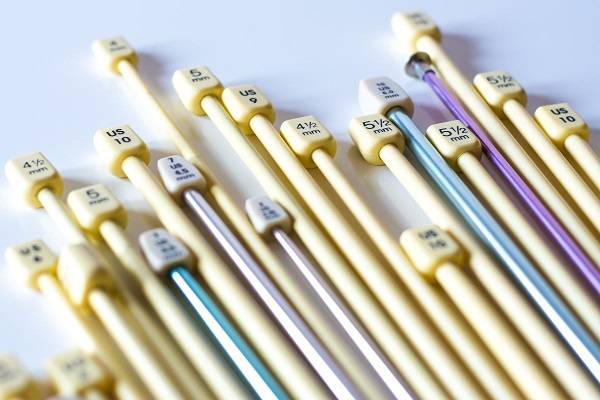Start with a simple frame loom, tapestry needle, and yarn snips. As you improve, invest in a shuttle, beater, and better-quality looms.
Guide On Basic Weaving Tools & Accessories Every Weaver Should Have
Learn More About Necessary Equipment That Makes Weaving Easier, Smoother and Faster.

Innovation & Quality
Developing and supplying premium-quality, sustainably grown, consumer products
100% Natural
Organically Grown and Ethically Sourced
hemp and other natural fiber products
Shipping
We offer fast shipping
Your order out within 1-3 days
Wholesale
Visit our wholesale portal to register or login to your account
Turning yarn into cloth is not an easy craft, and to make it more joyful and faster, you should obtain tools that will help you accomplish your goals without much trouble. People who are new to weaving may feel overwhelmed by the number of tools and accessories available and it’s no wonder it is difficult for them to determine which one they really need. Some of the most popular items include the loom, tapestry needle, weaving shuttle, comb, and yarn snips. Some of these you probably already have at home, while other need to be acquired.
Shop High-Grade Cord & Yarn Weaving Supplies at Hemptique
Hemptique is proud to be recognized as eco-conscious manufacturer of high quality cordage made of natural materials such as hemp, linen, and organic cotton. Our priority is to deliver first-class, durable, eco-friendly supplies to gifted artisans around the world and help them bring their ideas and designs to life. We manufacture fiber supplies for various crafts and art, including weaving, knitting, crocheting, macrame, jewlery making and many more. Our bestselling product for weaving is heavy worsted Hemp yarn, made of natural hemp and cotton blend. It’s breathable, durable, antibacterial, and sustainable, with high capacity to absorb moisture. Our assortment includes 6 different colors, sold as individual balls. With our premium yarn you can create a variety of woven items such as placemats, coasters, tapestries, rugs, cushion covers, wall hangings, baskets, hats, bookmarks, and table runners. Our company offers perks for those who want to join our wholesale program or those who want to order in bulk.
Brief Overview of Weaving Looms
Before we analyze essential tools, we want to introduce you the foundation of weaving craft – the loom. A weaving loom is a device or machine used to create fabric by interlacing yarn with threads which are fastened under tension on the loom. It gives you support while you interweave vertical and horizontal threads to create various designs, patterns and textures.
Essentially, loom is the structure that holds the warp threads (vertical) in place while you work the weft threads (horizontal) to form fabric.
- Frame (lap) loom - Also referred to as tapestry loom, this is simple, lightweight device used mostly for smaller projects such as art pieces or smaller size tapestries. It’s the most basic type of loom with just a frame threads stretched across, so it’s good starting point for new learners.
- Backstrap loom – It’s very similar to frame loom and it’s often used for complex weaving, as seen in traditional designs. It’s simple and portable, with warp threads stretch between two sticks using a backstrap to secure the loom to weaver’s body.
- Rigid-heddle loom – When you gain some knowledge and get familiar with different techniques, you can move on to this device. It has a mechanism that allows you to thread longer fabrics and more complex patterns, compared to those on basic frame looms.
- Table loom – It’s small, portable loom is more versatile than frame loom, as it can handle larger projects and often has multiple shafts. Typical DIY projects include placemats, scarves, cushion covers, and wall hangings.
- Inkle loom – This is specialty loom, used to make narrow strips of fabric, such as belts, straps, and bands. As such, it has limited pattern options and it may not the best choice for those people who want to explore different threading techniques before committing to only one.
- Floor loom – When you gain enough knowledge and skills and decide to move on to crafting wide and long pieces of fabrics (rugs, blankets, throws) you can switch to a floor loom. Bear in mind that it costs significantly more than some basic alternatives and it takes up more space.

Crafters’ Favorite Weaving Tools & Equipment
Today, as more and more people are getting interested in taking up a hobby as a pastime, as a result the craft tools market has experienced substantial growth. One trend that has gained momentum is growing demand for weaving tools.
Today, you can find lots of various equipment for this fiber craft, but we will focus only on those that have been popular among those individuals who are beginning this journey. As you progress and gain more competence, you will most likely advance to more complex designs that will require supplementary equipment.
Tapestry Needle
When you are interlacing fiber, it’s very useful to have tapestry needles. These needles are specifically designed for yarn work – they have a large eye and a blunt tip. The eye of the needle, which is much larger than that of regular sewing needle, allows you to work with thicker, chunkier threads and yarns, while blunt tip prevents damaging the fibers by piercing through the fabric.
- Extra-long tapestry needles are especially good to thread through multiple warp thread at once on wide and skinny weaves. This way, not only will you save time, but your finished item will look neat and polished.
- Regular-sized tapestry needles are perfect for weaving in tails. It would be difficult to do this task with long needle, so consider acquiring both types.
- Bent tapestry needle – With slightly curved tip, this type of needle is ideal for securing yarn ends. You will have more control and better accuracy with small curvature on top.

Tapestry Beater
Tapestry beater, also referred to as ‘weaving fork’, ‘weft comb’, and ‘weft beater’, is a hand tool used to create tight, consistent tension of the fabric by compressing weft yarn into its place. It firmly presses down weft around the warp and compacts the fiber.
In essence, tapestry beater ‘beats’ the fiber into its place. Some people use regular serving fork instead of tapestry beater, so in the beginning a simple fork may be a good solution for you, too.
Most combs have different tine spacing, so it’s something to consider before you purchase one. If you are working with chunkier yarn, make sure it can fit between the fork’s teeth. Another thing to take into account is handle length. Longer handles have possibility of creating more force, while short handles have better precision. Some weaving forks are weighted to be able to provide more force when packing down denser fabrics. Other types include unweighted, single-ended, and double-ended. Typically, they’re made of wood, with smooth oil finish, minimizing risks of fiber damage.
- Smooth, even appearance of the final piece
- Increased strength and durability of handmade item due to tightly packed weave
- Greater control of fabric density
It’s designed to fit your hand and makes the crafting process more enjoyable

Yarn Snips
If you do decide to get into weaving craft, it’s important to have dedicated scissors, because if you use the same scissors for cutting other materials like cardboard, wire, or paper, you will dull them and they may not work as well as you’d prefer.
Yarn snips are small, specialized tool used for quickly cutting yarn, fabric, and thread. They are similar to scissors, but are smaller and they have a spring mechanism and sharp, pointed blades, making them perfect for clipping yarn tails. You can use regular scissors for this task, too; however, yarn snips are more precise and much more faster.
- Clean cuts with less fraying or fiber pulling
- Faster than regular scissors, swiftly trimming multiple threads
- Easy to use and carry due to their compact, lightweight design

Weaving Shuttle
If you are weaving a large area of one color, this tool is a must, because it can save you a significant amount of time. A weaving shuttle holds yarn while being passed back and forth through the ‘shed’ (raised warp structure).

Tapestry Bobbins
Tapestry bobbin is a small tool intended to hold and carry yarn during the weaving process of complex, multi-color designs, especially over a large area. It’s a combination of a shuttle and bobbin, and it’s purpose is to help keep your yarn organized and to help you easily switch between different yarns, without tangling. A tapestry bobbin has a pointed end, so that it’s easily threaded through the warp, a shank where yarn is winded, and a head that prevent yarn from falling off the bobbin.

Rotating Heddle & Shed Sticks
Rotating heddles (shed sticks) are weaving tools used to create a ‘shed’ – space between alternating warp threads that clears the passage for weft to pass through and this way the entire weaving process is sped up and simplified. Rotating heddles and shed sticks are best used for larger, plain weave projects.

Weft Yarn
‘Weft’ yarn is how we refer to the filling thread which is woven horizontally and serves to create patterns and add color and texture. These strings are typically slightly thicker than warp yarn because they need to provide good coverage of the vertical structure. But you should also take into consideration project type, colors, and how it interacts with warp fiber.
How To Determine Which Tools To Get First
In the beginning, it is best to start simple, with just basic tools and supplies (a loom, warp and weft yarn). As you get familiar with basic techniques and after you practice, you will improve your skills and will be ready to acquire additional tools such as tapestry needle, fabric scissors/yarn snips, weaving comb, and a shuttle.
As you become better and gain more knowledge, you may decide to invest in floor loom. This would be the time to consider getting accessories like shed sticks, yarn winding tools, rotating heddles, and picker sticks. If you are not confident enough to make the decision on your own, try to get guidance from advanced weaver, or look for resources online.
Visit Our Knowledge Base to Find Out More
If you are looking for inspiration or if you want to dive deeper into various crafts, visit our Knowledge base section. It is a compilation of comprehensive guides, easy tutorials, and fun project ideas suitable for all ages and skill levels. Our knowledge base serves to provide professional tips, references and guidelines, but also to help you practice and find necessary tools easier. The articles published cover a wide range of crafts that use cords, yarn, threads, or twine as main supply, including jewelry making, weaving, knitting, crocheting, macrame, and string art. You will also find seasonal and holiday craft ideas for kids and adults for unique handmade pieces that can also be used as gifts. We have articles on crafts for Christmas, Valentine’s Day, Easter, Halloween, Thanksgiving, Mother’s Day, and Father’s Day.
Frequently Asked Questions
How do I know which weaving tools are worth investing in first?
Can I use regular sewing needles instead of tapestry needles for weaving?
No, sewing needles are too small and sharp. Tapestry needles have a large eye for thick yarn and a blunt tip to avoid damaging fibers.
What’s the best way to avoid wrist strain while weaving?
Use ergonomic tools with comfortable grips, take breaks, and maintain good posture while weaving.
Can I weave with recycled or upcycled materials?
Absolutely! Many crafters use old fabric strips, plastic bags, or even paper to create eco-friendly woven projects.
How do I store my weaving tools to keep them in good condition?
Keep needles in a small case, store shuttles in a dry place, and avoid exposing wooden tools to extreme humidity.
What’s the easiest weaving project for a complete beginner?
A small wall hanging or coaster is a great place to start because they require minimal tools and basic techniques.
What’s the difference between a cheap and an expensive loom?
Expensive looms offer better durability, precision, and additional features like multiple heddles for complex patterns.
Is there a ‘universal’ yarn that works for all weaving projects?
No, but a hemp-cotton blend is a versatile choice for both decorative and functional projects.
What’s the biggest mistake beginners make when buying weaving tools?
Buying too many tools upfront. Start with basics and upgrade as needed to avoid wasting money.
Can I weave without a loom for small projects?
Yes! You can use a DIY cardboard loom, embroidery hoop, or even weave by hand using knotting techniques.
How do I prevent my woven piece from unraveling?
Secure the edges with hemstitching, knotting, or a finishing technique like twining or whipstitching.
What’s the best way to blend multiple colors in a weaving project?
Use tapestry bobbins for easy color changes and experiment with techniques like hatching or interlocking.
Do different looms create different textures?
Yes! A rigid-heddle loom allows for intricate patterns, while a frame loom offers more freestyle weaving.
Can I use a crochet hook for weaving?
Yes! A crochet hook can help pull weft yarn through tight spaces or assist with fringe work.
What should I do if my yarn keeps breaking while weaving?
Check for too much tension on the warp and use a more durable fiber like hemp or wool instead of fragile yarn.
How do I make my woven piece look more professional?
Focus on consistent tension, clean finishing techniques, and selecting high-quality yarns.
How do I keep my warp threads from shifting too much?
Maintain even tension, use a warp separator, and consider warping your loom with stronger yarn.
Can I use embroidery floss for weaving?
Yes, embroidery floss works well for small, delicate projects, but it may not be strong enough for larger pieces.
What’s the best way to practice new weaving techniques?
Use scrap yarn to create sample swatches before committing to a full project.
Where can I buy sustainable and eco-friendly weaving supplies?
Hemptique offers natural fiber yarns that are perfect for sustainable weaving projects.


